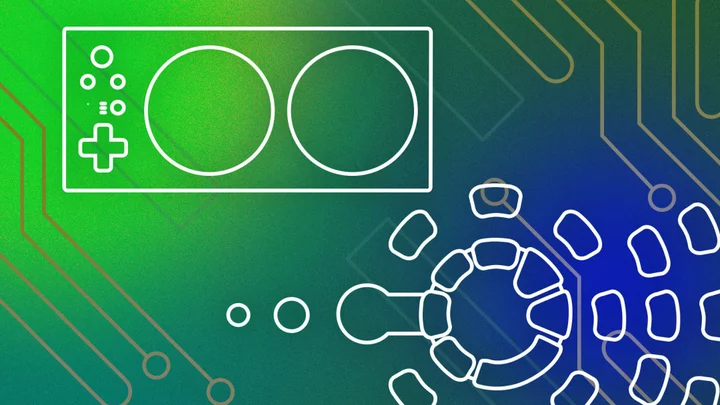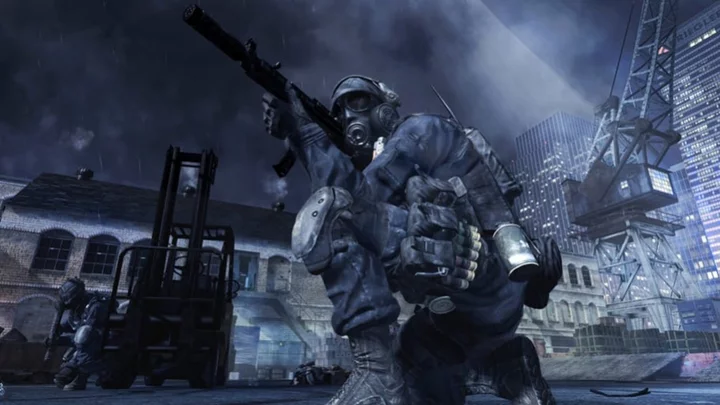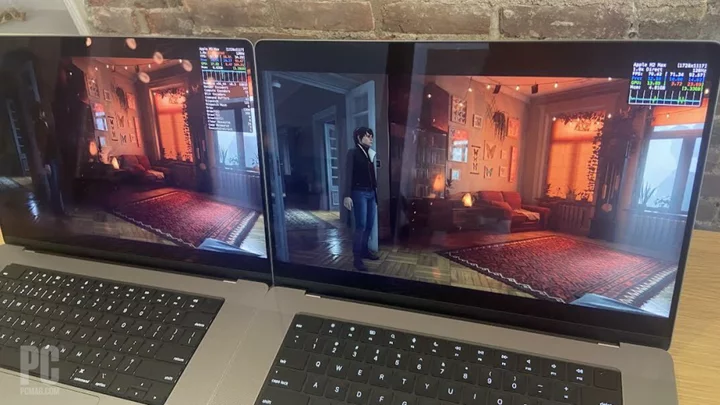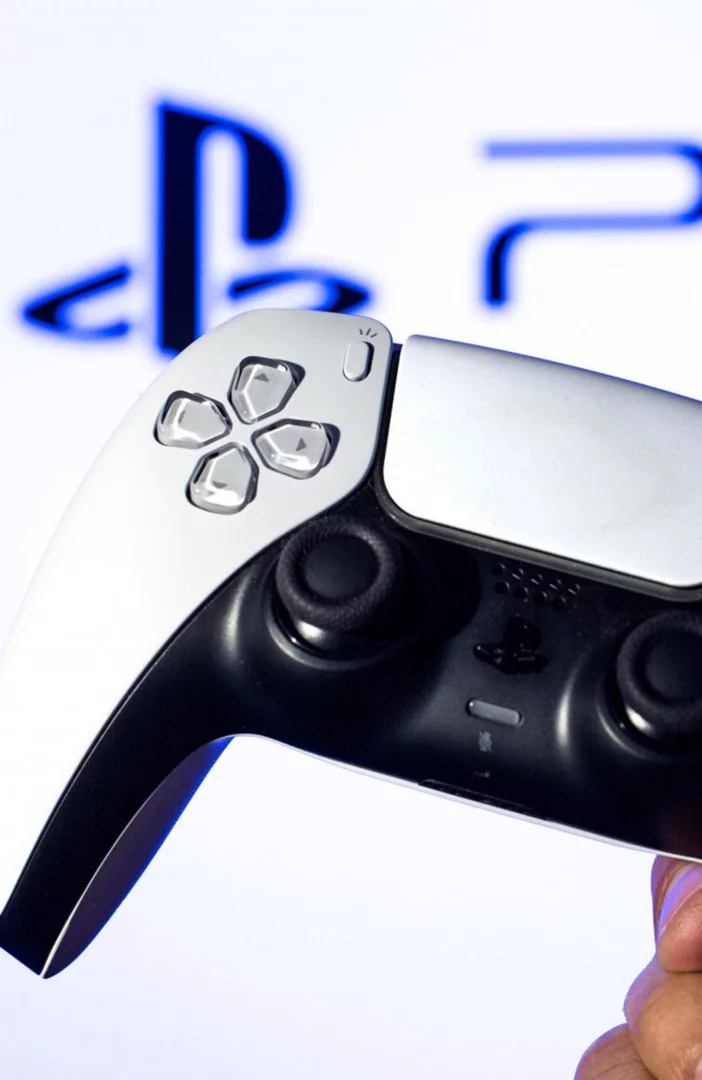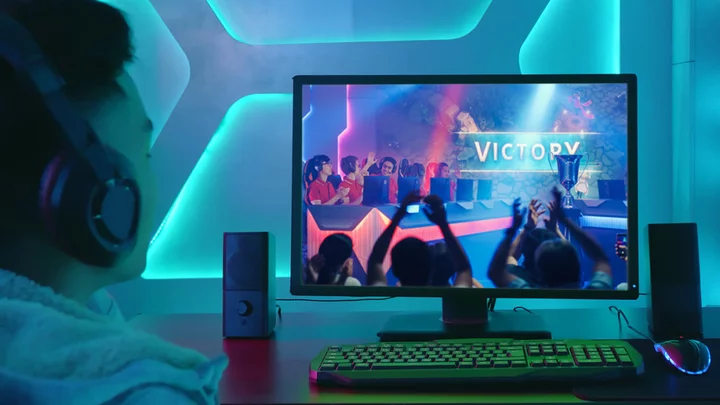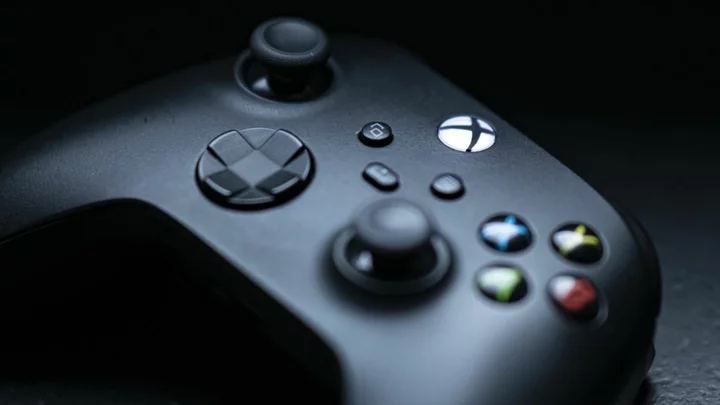Like many young men, Jean Molla plays a wide range of video games. He enjoys popular shooters like Fortnite, he’s an avid Minecraft player, and he’s especially excited about Diablo IV—mostly because it can be played with one hand. You see, Jean has Duchenne Muscular Dystrophy, a genetic disorder characterized by progressive muscle degeneration and weakness. Because of this, he can’t play games with a typical controller. But with the help of voice commands and software, Jean can play games he never even thought he could before.
On his YouTube channel, Wheelchair Guy, Jean posts accessible game guides that feature him playing a wide range of games using just a mouse and his voice. These include the notoriously difficult Elden Ring, fast-paced shooters such as Fortnite, and the multiplayer party game Fall Guys.
Jean is just one of 46 million disabled gamers, according to Steven Spohn of AbleGamers, one of the most well known nonprofit organizations for the disabled gaming community. That’s about 26% of all gamers in the United States. But despite its 50 years of existence, the billion-dollar video game industry has only just started to make accessible tech accessible to those who need it.
Accessible Origins
In the early days of the video game industry, accessible tech was hard to find. The first notable piece of mainstream accessible technology was Nintendo’s hands-free controller for the Nintendo Entertainment System. You wore it like a vest and used your mouth to control the A and B buttons. The controller was sold exclusively through Nintendo’s customer service number—but it sold for years.
Although other forms of media began to become more inclusive, expanding accessible offerings with features such as closed captioning and audio descriptions, accessibility in video games remained stagnant.
President Obama signs the Video Communications Act. Standing, from left are, Sen. Mark Pryor, D-Ark., Sen. Jay Rockefeller, D-W.Va., Rep. Edward Markey, D-Mass., Steve Wonder, Rep. Henry Waxman, D-Calif., Sen. Barbara Mikulski, D-Md., and Sen. Byron Dorgan, D-N.D (Credit: AP Photo/Susan Walsh)Then in 2010, President Obama passed the Video Communications Act, which updated federal communications law to increase access for persons with disabilities to modern communications. The act updated accessibility laws to include 21st-century technologies, including new digital, broadband, and mobile innovations. But once again, video games were left by the wayside. Still, this act signified an opportunity for change, and charities including AbleGamers began to lobby for accessibility directly to the game industry. What had lain dormant for decades suddenly sprang to the forefront of game design.
This led to innovation after innovation in hardware and software but also an increase in visibility. Perhaps the biggest milestone came in 2011 with the creation of the Adroit Switchblade. Mark Barlet, the founder of the AbleGamers charity, was inspired by the popularity of console gaming, which had skyrocketed in acceptance but lacked the diversity of peripherals offered for the PC.
The Microsoft Xbox Adaptive Controller and Adroit Switchblade (Credit: Ablegamers)"We created this idea of a controller built around switches, because the disability community runs on switches. Our friends over at Evil Controllers worked with us to make the Adroit Switchblade for the Xbox 360," Barlet said in an interview with TechRadar. "The largest problem with working with consoles is getting past the encrypted controller, so sitting at the bottom of the Adroit Switchblade is actually an Xbox 360 controller board, because we needed the chip on it that authenticated it so it could talk to the Xbox."
"We created this idea of a controller built around switches, because the disability community runs on switches."Eventually, the controller caught the eye of Microsoft. Impressed with his work, Microsoft enlisted Bartlet and his team to collaborate with them on what would become the Xbox Adaptive Controller, a device designed to meet the needs of gamers with limited mobility.
The Xbox Adaptive Controller (Credit: René Ramos)Acting as a hub, the Xbox Adaptive Controller lets you attach external devices such as switches, buttons, mounts, and joysticks to create a custom controller experience. Buttons, thumbsticks, and trigger inputs are controlled with assistive devices connected through 3.5mm jacks and USB ports. A new, inclusive way to play had finally arrived, backed by one of the biggest names in tech and gaming.
Strength in Numbers
Built from the ground up through partnerships with charity organizations like AbleGamers, The Cerebral Palsy Foundation, and SpecialEffect, Microsoft's controller was more than just a gimmick—it was also a way to solidify the company's dedication to building a better environment for the community.
In an interview with PCMag, Bryce Johnson, co-founder of the Microsoft Inclusive Lab and co-inventor of both the Xbox Adaptive Controller and the Microsoft Adaptive Mouse, reflected on Microsoft’s approach to adaptability tech.
Bryce Johnson, co-founder of the Microsoft Inclusive Lab and co-inventor of both the Xbox Adaptive Controller and the Microsoft Adaptive Mouse, and Dr. Kaitlyn Jones, Gaming Accessibility Program Manager at Xbox (Credit: Microsoft Gaming Accessibility Team @ YouTube)“We always talk about in the inclusive tech lab that we're designing products with, not for. And when the adaptive controller came out, a lot of the product design community kept asking us ‘Well, how did you validate the adaptive controller? What were the methodologies that you used to make sure this was the right thing?’” Johnson said. “But fundamentally we engage the disability community from the very earliest aspects of the product.
“We're not sitting there making something and then going out to the community [and asking] 'Is this what you want?' We're working with the community to define what they want now,” said Johnson.
"Fundamentally we engage the disability community from the very earliest aspects of the product."In April 2021, Microsoft doubled down on its accessibility efforts, pledging a “technology-led five-year commitment to create and open doors to bigger opportunities for people with disabilities.” Microsoft’s new initiative would focus on three priorities: spurring the development of more accessible technology across our industry and the economy, using this technology to create opportunities for more people with disabilities to enter the workforce, and building a workplace that is more inclusive for people with disabilities.
Jenny Lay-Flurrie, Chief Accessibility Officer at Microsoft (Credit: Microsoft)Those efforts have manifested in many ways. The Inclusive Lab, Microsoft’s space dedicated to education, accessible productivity, and gaming for people with disabilities, has hosted over 8,000 visitors since it opened in 2022, and Microsoft’s Ability Summit continues work towards a more inclusive future, incorporating Artificial Intelligence into their latest innovations.
"We have a lot of improvements to make, but we’re in a greater spot than we were just five years ago.”“It’s a growing field,” writes NebulaBash, an accessibility specialist who runs the site ControllerConfig, which features control guides for games they’ve played. “It heartens me to see developers rallying behind accessibility efforts. We have a lot of improvements to make, but we’re in a greater spot than we were just five years ago.”
NebulaBash has had four work-related repetitive-stress injuries, two in each arm (bilateral carpal tunnel syndrome and bilateral cubital tunnel syndrome), which have since been operated on. But their surgeries resulted in nerve damage. Because of this, the adaptive controller is their primary controller, and they play almost exclusively with their feet.
But that hasn't slowed NebulaBash down at all. Using a combination of hardware, including the Microsoft Adaptive Controller, Logitech Adaptive Gaming Kits, and two Latch Boxes, they’re able to play games including Resident Evil 2, Honkai: Star Rail, Genshin Impact, and just about anything else that catches their interest.
“Everyone’s experiences are different, and that is a challenge—both to developers and to players,” NebulaBash explains. “The biggest barrier for me was, starting out, I couldn’t find many resources on what was available that fit my needs. However, just as accessibility hardware is growing, accessibility resources and communities are, too.”
And thanks to the advances made in accessible tech, disabled gamers have more opportunities to form a community than ever before. NebulaBash is a member of DisabledGamers Discord, an offshoot of /r/DisabledGamers, which boasts 7.6k members.
How to Build for Everyone
But not everyone can enjoy the fruits of this progress. Jean Molla says that, despite all the progress the gaming industry has made in regards to accessibility, he's still frustrated with adaptive hardware.
“[I’m] not very happy at the moment due to the restrictions with adaptive equipment. It can be incredibly frustrating that most options available still require some level of hand or arm movement, leaving individuals with very limited mobility excluded,” Molla writes.
Jean Molla and popular Youtuber Ricky Berwick (Credit: The Wheelchair Guy @ YouTube)“It's crucial for the industry to recognize this issue and prioritize the development of more inclusive solutions. Focusing on technologies like eye-tracking and actively involving the disabled community, they can work toward creating adaptive hardware that truly caters to individuals with diverse mobility challenges.”
The criticism—and the challenges that come with it—are something Bryce Johnson and his team are acutely aware of.
“It's important for us to make sure that we're not designing for too niche an audience,” Johnson continues. “You know, when someone comes up to me and they say that they have advice for me on how the adaptive controller could be better for people with disabilities, they're often thinking about a specific type of disability.”
The Xbox Adaptive Controller connected to third-party peripherals (Credit: Microsoft)Much of that philosophy can be seen in both the Xbox Adaptability Controller and the Microsoft Mouse, but perhaps most prominently in the Lab, which is crafted so people with disabilities can explore assistive and adaptive technologies, inclusively designed products, and sensory experiences. But when addressing one disability, there's a chance that another will be ignored.
“What they don't necessarily recognize, because they're not taking a broad enough view, is that when you make choices for one type of disability, you could be harming another. And that's not [necessarily] a bad thing. You have to make those [choices] intentional.”
Growing Pains
But while intentionality is essential, there are other challenges to overcome. Despite the modular nature of adaptable hardware, costs can sometimes prove the biggest barrier of all.
“Cost is a huge factor,” N.B. writes. “There are few non-medical and non-educational accessibility device distributors, and they get expensive fast.”
Kristie M, a gamer with a spinal cord injury that forces her to rely primarily on her left hand, shared the sentiment, “I wish that there wasn't such a price increase [for] these devices. The disability tax strikes again.”
Disabled gamers using the Xbox Adaptive Controller (Credit: Microsoft)It’s no secret that being disabled can be expensive. But in a 2017 U.S. News interview, Eric Duffy, director of the assistive technology team at the National Federation of the Blind, explained that companies with the foresight to develop with inclusivity in mind will save money in the long run.
"If you don't build anything with accessibility in mind, then it's more expensive to go back and redo it.""We find that building an accessible website, for instance, is not hard, not expensive if it's done right," Duffy said. "The proper coding for a website to make it accessible for the blind also makes it better for sighted users. But if you don't build anything with accessibility in mind, then it's more expensive to go back and redo it."
Research shows that the global assistive technology market will reach $31 billion by 2030, yet the burden of costs often falls on the users.
“'These devices are not covered by insurance because they are not considered medical devices," Duffy said.
Sony Project Leonardo (Credit: René Ramos)And it’s not like companies will lose money if they commit to accessibility—quite the opposite. Forbes suggests that “at least $10 billion (and maybe as much as $16B) in design spending in the US and Canada will shift to tech vendors and services companies that commit to accessibility.” Further reinforcing accessibility is not only an ethical priority but a financial one, too.
Accessibility Is a Human Right
“Gaming with a disability offers a distinctive and fulfilling experience,” said Molla. “When I'm immersed in games like Fortnite and performing well, my disability fades into the background, allowing me to forget about its challenges.”
While the state of accessible tech has made leaps and bounds in the last few decades, there’s still a lot of room to grow. The COVID-19 pandemic has shed light on the importance of mental health, though many non-physical disabilities are still often overlooked.
While the state of accessible tech has made leaps and bounds in the last few decades, there’s still a lot of room to grow.But accessibility options have become more common in major AAA video games, while other hardware manufacturers join the effort: For instance, Sony has begun to deploy its own customizable accessibility controller kit Project Leonardo for PlayStation 5. And with every innovation and every advancement, gaming becomes one step closer to being truly for everyone.
“Living with a progressive physical condition can be tough, but gaming has become a form of therapy that I'm truly grateful for," said Molla. "Furthermore, the ability to game with friends and engage socially is truly amazing."

